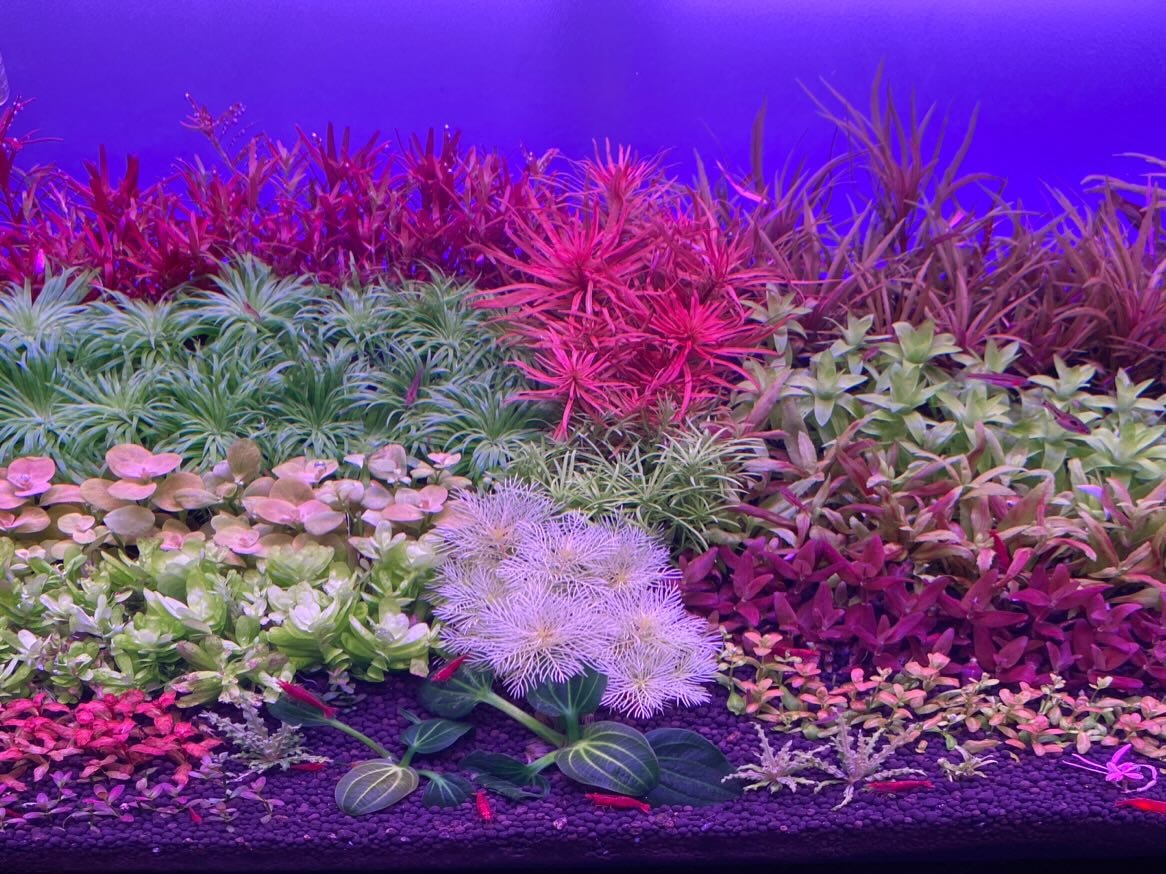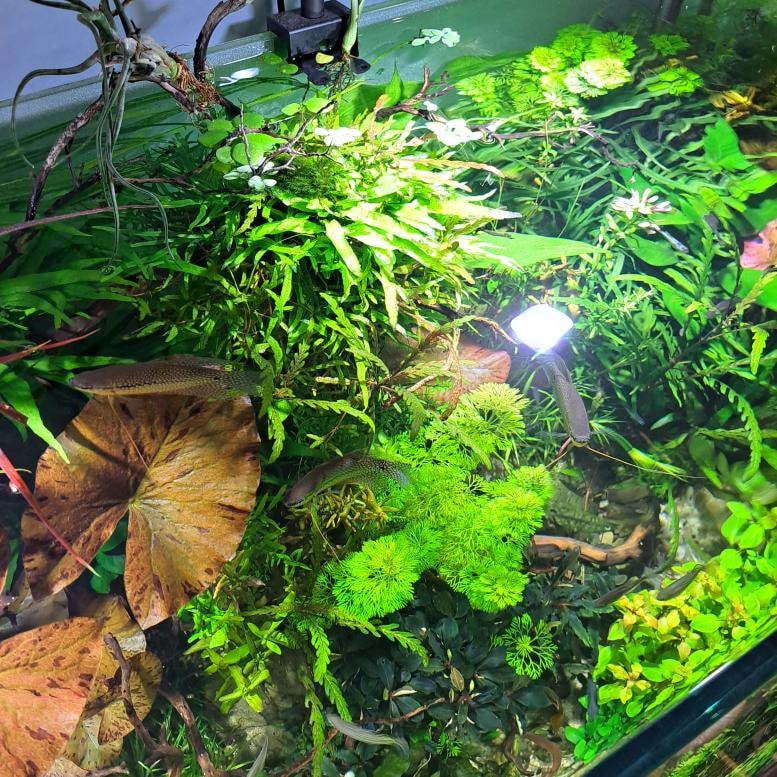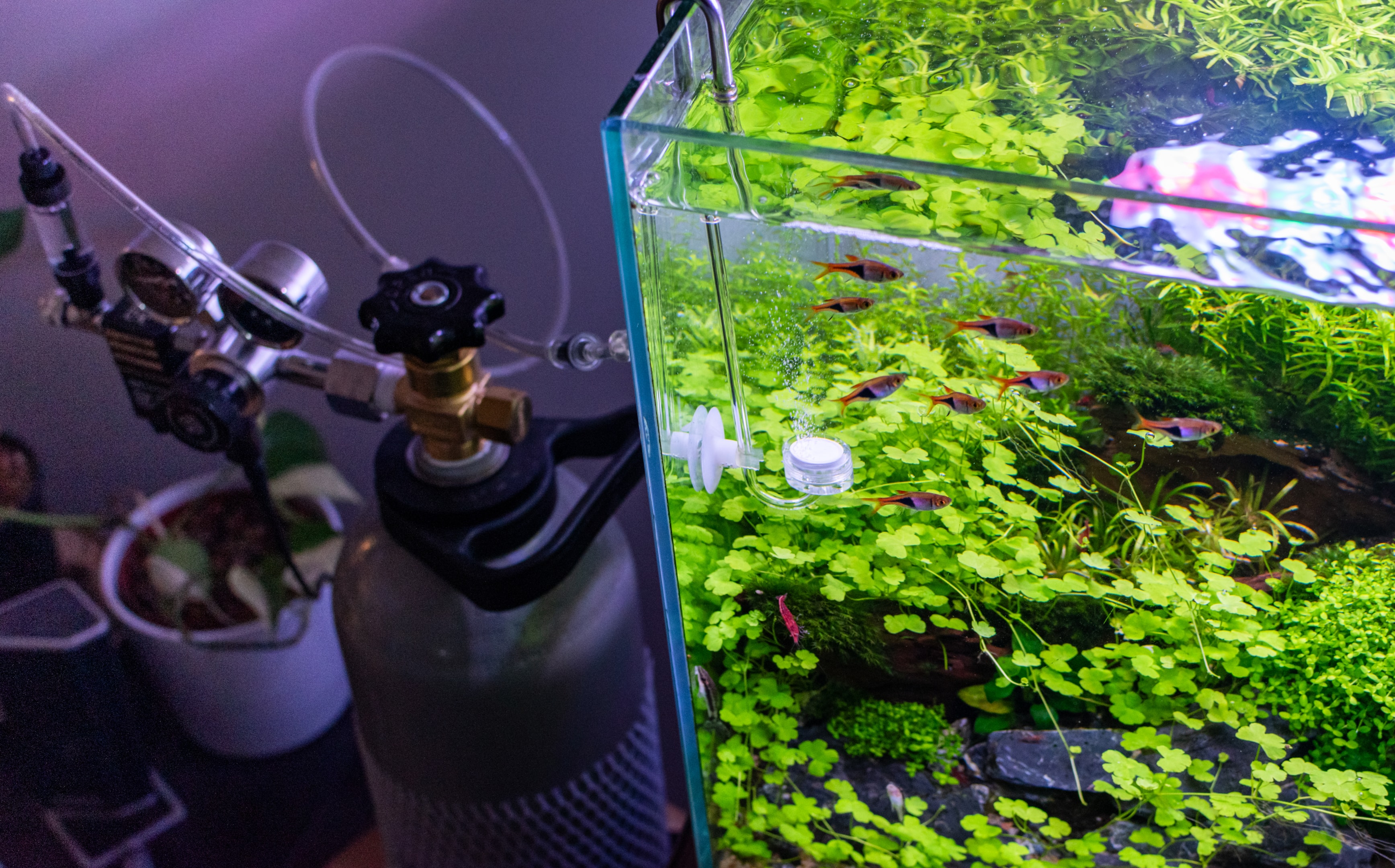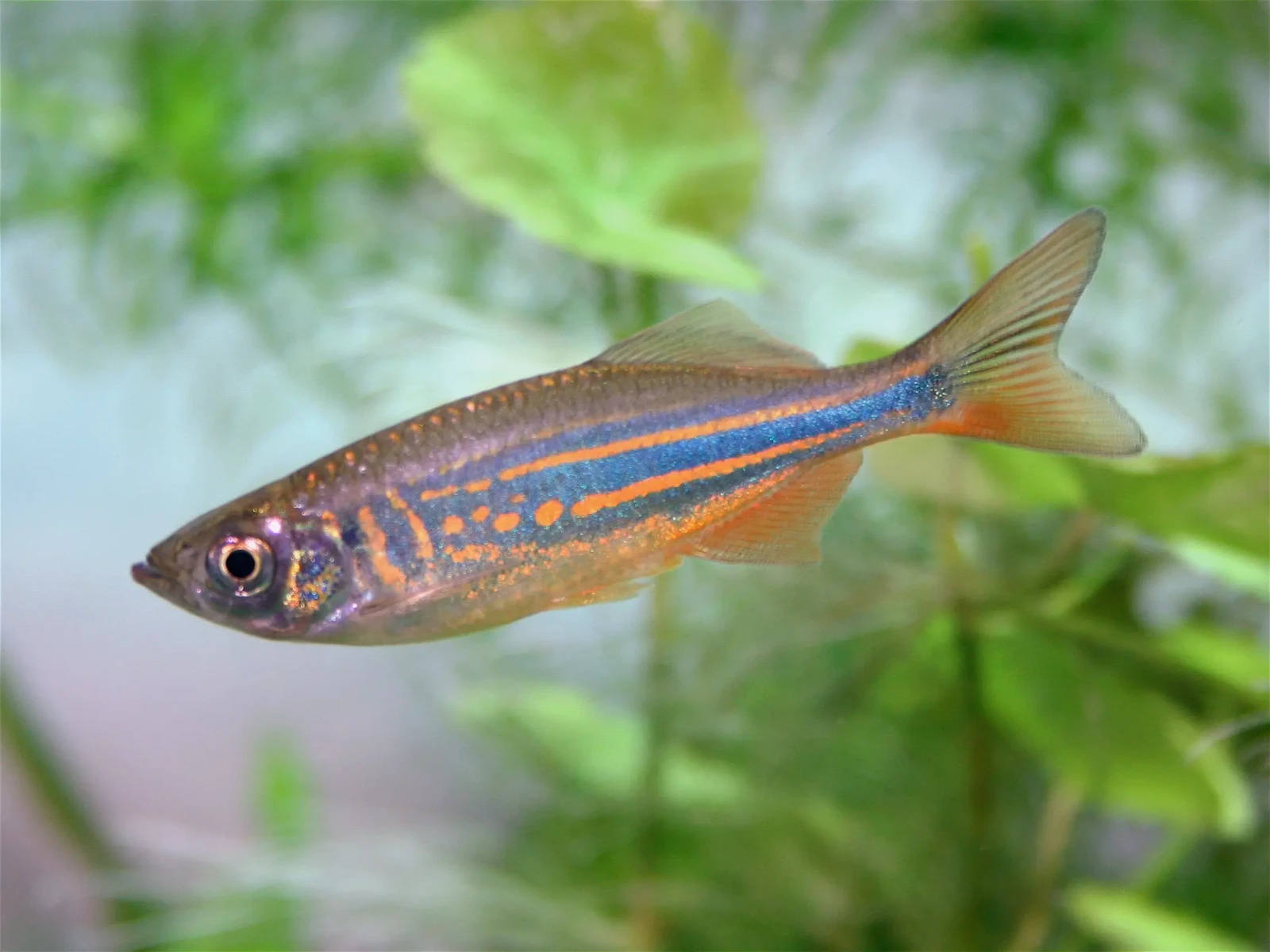Creating a stunning aquascape: Tips for designing a beautiful aquarium
Introduction to Aquascaping: What Makes a Beautiful Aquarium
Creating a beautiful aquascape is a combination of art and science. It involves designing a visually pleasing layout using plants, rocks, driftwood, and other natural elements to mimic nature's beauty within an aquarium. A well-designed aquascape not only enhances the aesthetic appeal of your home but also provides a healthy environment for the aquatic life it houses.
The key to a stunning aquascape lies in understanding how to balance elements such as aquatic plants, hardscape materials, and proper lighting. By carefully selecting these components and planning your layout, you can create a beautiful aquarium that will captivate and inspire.
Choosing the Right Aquascaping Style for Your Aquarium
Before you begin designing your aquascape, it's essential to decide on an aquascaping style that suits your tastes and the needs of your aquarium. Popular styles include the nature aquarium, Dutch style, and Iwagumi, each with its unique characteristics and design principles. Understanding these styles will help you make informed choices about your plants, hardscape, and overall layout.
Whether you prefer the minimalist aesthetic of an Iwagumi aquascape or the lush, densely planted look of the Dutch style, choosing the right design will provide a foundation for creating a harmonious aquarium environment. Make sure to align the style with the size of your tank and the species you plan to house to achieve the best results.

The Importance of Hardscape Elements in Aquascaping
Hardscape elements, such as rocks, driftwood, and substrates, are crucial components in the aquascaping process. They serve as the foundation of your design, providing structure and depth to the layout. The strategic use of hardscape materials helps to create a visually interesting and balanced aquascape.
Additionally, hardscape elements provide hiding spaces and territories for your fish, promoting their natural behaviors. They also support plant growth by providing a stable base for the plants' roots and enhancing the overall aesthetics of the aquascape. Understanding how to use these elements creatively is key to achieving a cohesive and beautiful design.
Selecting the Right Aquatic Plants for Your Aquascape
Choosing the right aquatic plants is vital for creating a healthy and visually appealing aquascape. Different species of plants have varying needs in terms of lighting, nutrients, and water conditions, so it’s important to select those that will thrive in your aquarium. Plants like Java Fern, Anubias, and Cryptocoryne are popular choices due to their hardiness and aesthetic appeal.
A well-planned aquascape should incorporate plants that fit the layout and complement the hardscape materials. Make sure to include a mix of foreground, midground, and background plants to create a sense of depth and dimension. This ensures that the aquascape remains balanced and visually engaging from all angles.

How to Design a Balanced Layout for Your Aquascape
Achieving a well-balanced aquascape is essential for both visual appeal and the health of your plants and fish. The design should incorporate a flow that directs the viewer’s eye from one element to another while creating a harmonious overall effect. One effective way to achieve this balance is by following the golden ratio, a principle that guides the placement of focal points and creates an aesthetically pleasing composition.
A balanced layout also considers the spacing between plants, hardscape materials, and fish. Leave enough room for each element to thrive, ensuring that no part of the aquascape feels overcrowded. This approach encourages healthy plant growth and allows fish to move freely within the environment.
Using the Golden Ratio to Create Visual Harmony in Your Aquascape
The golden ratio is a powerful tool in aquascaping that helps create a visually balanced and harmonious design. By using this principle, you can guide the placement of aquatic plants, hardscape elements, and other features in a way that feels natural and pleasing to the eye. The golden ratio can be applied to both the overall layout of the aquascape and the positioning of individual elements, ensuring that nothing feels out of place.
When creating an aquascape, think of the aquarium as a canvas where the golden ratio helps divide the space into areas of visual interest. This method works especially well in nature aquariums, where the goal is to replicate natural landscapes. By following the golden ratio, you can achieve a balance between foreground plants, midground plants, and background plants, ensuring the aquascape feels both dynamic and aesthetically appealing.

Creating Focal Points to Enhance Your Aquascape
Focal points are essential in any well-designed aquascape because they guide the viewer’s eye and create a sense of depth and interest. These points of emphasis can be created using hardscape elements, such as rocks, driftwood, or unique plant arrangements. By placing a striking feature in a well-thought-out location, such as the intersection of the golden ratio, you create a visual anchor for the aquascape.
To enhance the aesthetic appeal of your aquarium, consider using foreground plants or distinct aquatic plants as focal points. These can be plants with vibrant colors, unique textures, or unusual shapes that stand out against the rest of the aquascaping elements. The focal points should draw attention without overwhelming the viewer, offering a sense of balance and creating a visually pleasing narrative within your aquascape design.
The Role of Lighting in Aquascaping
Proper lighting is one of the most critical factors in successful aquascaping. It not only illuminates the aquarium but also drives plant growth, supports photosynthesis, and helps define the overall mood and tone of the scape. Depending on the aquascaping styles you choose—whether it's a Dutch style, nature aquarium, or Iwagumi—the lighting intensity and duration will vary.
To achieve a stunning aquascape, selecting the right spectrum and strength of light is essential. High lighting may be needed for demanding plants, but this should be paired carefully with CO2 injection and nutrient dosing to avoid imbalances like algae blooms. An energy-efficient lighting unit with programmable controls gives you more precision and consistency, helping you shape both the health and look of your aquascape.
Nutrient-Rich Substrate: Key to Vibrant Plant Growth
A nutrient-rich substrate serves as the foundation of any healthy planted aquarium. Unlike inert gravel, these substrates contain essential nutrients like iron, potassium, and trace elements that fuel vibrant plant growth. Many foreground plants and rooted species thrive when they can access nutrients directly from the substrate, especially in densely planted layouts.
Choosing the right substrate ensures your aquatic plants establish strong root systems and grow with vigor. Some aquascaping styles, like the Dutch style, rely heavily on lush, layered plants, making a nutrient-rich base absolutely essential. Over time, this kind of substrate not only boosts the vitality of your plants, but also contributes to overall water quality by stabilizing parameters and minimizing disturbances.
CO2 Injection: How It Impacts Plant Health and Aquascaping
CO2 injection plays a transformative role in the success of aquascaping, particularly in high-tech planted tanks. Carbon dioxide is a vital component of photosynthesis, allowing aquatic plants to grow faster, display richer colors, and develop more intricate leaf structures. In competitive aquascaping, consistent CO2 injection is often what separates an average layout from a stunning aquascape.
For aquascapers aiming for lush, carpeted foreground plants or a dense Dutch style layout, CO2 isn't just helpful—it's essential. When paired with proper lighting and a nutrient-rich substrate, CO2 injection enhances plant growth significantly. However, it also requires balance; too much CO2 without sufficient light or nutrients can disrupt the system, while too little can lead to slow growth and algae issues.

Maintaining Water Quality for a Thriving Aquascape
Maintaining excellent water quality is foundational to a healthy, beautiful aquascape. Even the best plant selection and hardscape materials won’t flourish if the aquarium suffers from poor water conditions. Factors like ammonia, nitrites, and nutrient imbalances can stress both plants and fish, leading to stunted plant growth or unwanted algae outbreaks.
Regular water testing and water changes are essential to maintain water quality. A reliable filter suited to your aquarium size helps manage debris and supports beneficial bacteria, which are crucial for biological stability. Pairing filtration with thoughtful aquascaping—like avoiding overstocking and choosing the right plants—ensures your aquascape remains not only visually stunning but also ecologically balanced.
Dealing with Algae Growth in Your Aquascape
Algae is one of the most common challenges in aquascaping, especially in planted tanks with high light and nutrient levels. While some algae is inevitable—and even natural in a balanced tank—excessive growth can quickly overwhelm your layout and outcompete your plants. It can cloud your carefully crafted aesthetic appeal, making your aquascape look unkempt.
To keep algae growth under control, it's important to maintain a proper balance between lighting, CO2, and nutrients. Overfeeding, inconsistent water quality, and too much light are common culprits. Incorporating fast-growing aquatic plants, limiting light exposure, and performing routine maintenance can help prevent outbreaks. Consider algae-eating species like Amano shrimp or Otocinclus to assist with natural control.
Incorporating Fish: How to Choose the Right Species
Adding fish to your aquascape enhances the visual movement and brings life to the layout—but choosing the right species is crucial. Select fish that complement the natural look of the scape and won’t disturb the plants or substrate. Avoid species that dig or nibble on delicate foreground plants, especially in a carefully styled nature aquarium or Dutch style layout.
Small, peaceful species like zebra danios, tetras, or rasboras are excellent for most aquascaping styles. They school beautifully, have a light bioload, and allow your plants to shine without becoming a distraction. When introducing fish, also consider their compatibility with your tank size, filtration, and water parameters to ensure both your fish and plants thrive in harmony.

Underwater Gardening: The Basics of Plant Care
Aquascaping is essentially a form of underwater gardening, where caring for plants plays a central role. Healthy aquatic plants require a balance of light, nutrients, and, depending on the species, carbon dioxide. Even hardy varieties like java fern or anubias benefit from a consistent routine of trimming, cleaning, and checking for signs of deficiency or melting. A focus on plant growth ensures your aquascape remains vibrant and balanced.
Using a nutrient rich substrate, maintaining stable water quality, and understanding the specific needs of your plants are all key steps in this process. While underwater gardening might sound technical, with a bit of observation and practice, you’ll create a thriving environment that supports both visual beauty and long-term plant health in your planted tank.
Placing Plants in the Foreground, Midground, and Background
Proper plant selection and placement are critical for visual balance in any aquascape. Foreground plants like dwarf hairgrass or Monte Carlo work well at the front of the aquarium, forming a dense carpet that draws the eye and adds detail. In the midground, medium-height plants like cryptocorynes or stem plants offer structure and help transition smoothly to the back.
The background is where tall plants such as Vallisneria or Rotala shine, creating a lush backdrop that frames your layout. Arranging plants in these layers—foreground, midground, and background—not only gives your aquascape depth, but also highlights the hardscape elements and enhances the overall aesthetic appeal of your design.
Creating a Natural Look with Aquascaping
One of the most admired aspects of modern aquascaping is its ability to mimic natural landscapes. Whether you’re inspired by forests, mountains, or riverbeds, the goal is to create harmony between plants, hardscape materials, and layout. Using asymmetry, layering, and negative space can help build a more authentic scene. A natural look is often more calming and blends seamlessly with a variety of décor styles.
To achieve this effect, choose aquascaping styles that emphasize organic flow—like the nature aquarium approach. Use driftwood and rocks as focal points, surround them with carefully chosen plants, and let textures and heights vary naturally. The result is a stunning aquascape that feels like a snapshot of an untouched environment.
Essential Tips for Managing Plant Growth and Pruning
Keeping your aquascape healthy and visually pleasing requires regular attention to plant growth. Fast-growing plants can quickly take over, shading out others and disrupting your layout. The key is consistent, gentle pruning that guides growth without shocking the system. Remove dead or dying leaves to maintain both aesthetic appeal and water quality.
Use trimming as an opportunity to shape your design. For example, keeping foreground plants low and dense while encouraging taller species in the back maintains depth. These essential tips for pruning help preserve your layout and encourage more compact, vibrant plant growth—critical for a balanced and attractive planted tank.
Conclusion: Bringing It All Together for a Breathtaking Aquascape
Designing a beautiful aquarium through aquascaping is a creative and rewarding process that blends art, nature, and science. From choosing the right aquascaping styles to managing plants, lighting, and co2 injection, every element contributes to the final masterpiece. With planning and patience, anyone can craft a stunning aquascape that’s both serene and sustainable.
Remember, the journey doesn’t end once the tank is set up. Continuous learning, observation, and small tweaks will help you grow as an aquascaper. Whether you’re aiming for a lush nature aquarium or a clean Dutch style layout, the principles of design and plant care remain the same: balance, health, and creativity.
Any questions? Our Support Team is always ready to answer them! Contact us directly via support@co2art.us!



